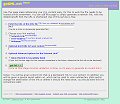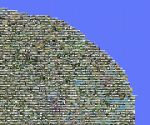As some may know this site serves a number of Network Links for Google Earth, for a long time I have thought it would be fun to map the data from that, but finally got round to trying it. This is still work in progress, so the current images are very much easly tests, but shows promise, hopefully can make some better visualizations – maybe even as KMZ ![]()
‘Lookat’ point v1: (click for 145k version)
View In Google Earth (don’t forget to try adjusting the tranparency slider!)
Shows some interesting patterns, there are a number of lines on the map, and definitily appears to be flight lines, I suspect this is from people leaving tours on loop, and a fudging a networklink to refresh periodically. Not sure how else to explain such repeatable loops – can a large number of visitors really be all following the same route? I’ll investigate this more in follow up map(s).
But WHAT is that point in the middle of the Atlantic?
Update: this is from about 900k hits from aug-nov ’07 – still processing the rest of the data!
Update 2: More maps here, all maps seem to to show the same overall pattern which is slightly puzzling, eg the IPs graph suggests that many users are following these flight lines.



